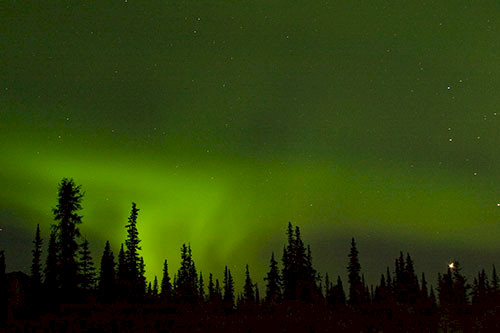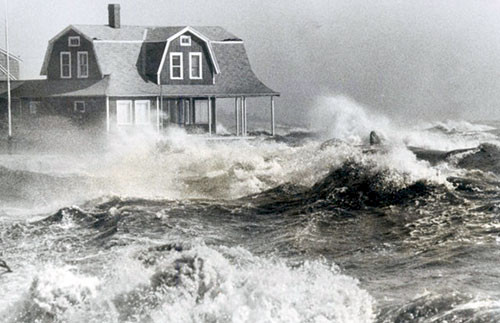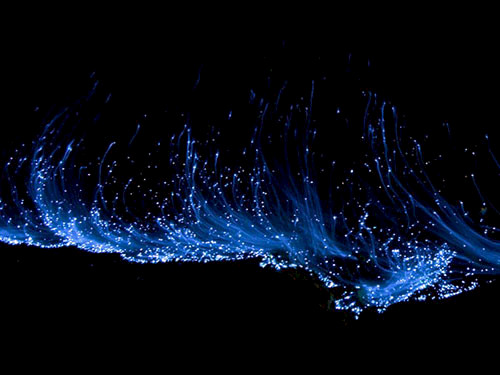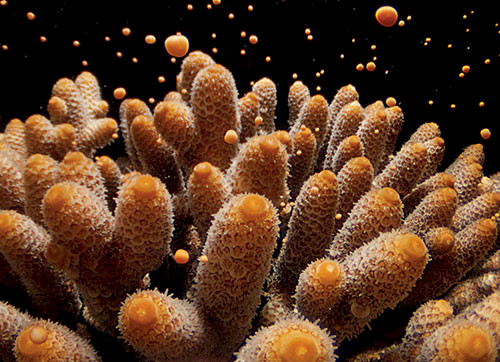Seven natural wonders of the world
Bill Dennison ·The original “seven wonders of the world” were manmade structures, often in iconic settings. The impact of seeing these manmade creations was what made them the wonders. Similarly, the seven natural wonders of the world are focused on the iconic settings that impact those viewing them. These natural wonders are both physical and biological, united in their ability to create lasting memories in those who view them. They are not everyday occurrences like sunrises or sunsets, but rare enough to induce a sense of awe and wonder in those viewing them. A common feature of the natural wonders is that photography rarely does them justice--the live experience of observing the natural wonders transcends the photographic memory.
The seven natural wonders of the world are the following: 1) Aurora (borealis or australis), 2) eclipse (solar or lunar), 3) green flash at sunset, 4) storms or tectonic events (hurricanes, tornados, earthquakes, volcanoes), 5) bioluminescence, 6) mass spawning, and 7) live birth of large animals.
1) Aurora borealis in the Northern Hemisphere (northern lights) or aurora australis in the Southern Hemisphere (southern lights) are natural light displays in high latitudes which can produce colorful curtains, dancing across the night sky. They are ephemeral and typically viewed in winter months standing outside in frigid conditions, as it is difficult to view night skies in high latitude summers. Thus, the experience of seeing them is made more memorable because of the viewing conditions. They are created from solar wind interactions with the earth's magnetic force, thus are a function of the earth's position within the solar system, a concept that reinforces their uniqueness. I have great memories of cross country skiing when I was at the Institute of Marine Science, University of Alaska, Fairbanks and watching magical aurora displays.

2) Another astronomical phenomenon which creates awe and wonder is when the alignment of the sun, earth and moon causes an eclipse, either a solar eclipse where the moon blocks out the sun or a lunar eclipse where the earth's shadow covers the moon. Total eclipses are rare occurrences, which combined with requiring clear skies make them difficult to view. Another type of eclipse is the transit of Venus across the sun that occurs at intervals of less than twice a century. The rarity of viewing these phenomena and the realization that they involve various celestial bodies makes them particularly special. For me, the solar eclipse is spectacular, but I enjoy watching some memorable lunar eclipses, because they are easy to watch (no special viewing aids needed) and really provide a three dimensional image of the moon.

3) One of the vigorously debated wonders is the green flash at sunset. There are many skeptics who believe the green flash is a myth, but there is photographic evidence as well an optical physics explanation. Part of the problem is that it is more of a green glow than a green flash, and it is best viewed with sunset over a water horizon. The green flash is a rare event, and some people view sunsets for years or decades without seeing a green flash. I had the good fortune of watching the green flash three days in a row while helping a friend deliver a 32’ double-ended Bristol Bay gill-netter from Seward to Sitka, Alaska across the Gulf of Alaska.

4) Experiencing nature in its full fury in either storms or tectonic events can be both frightening and memorable. Hurricanes, typhoons and cyclones (different names for the same large low pressure systems in different parts of the world) are awesome events, so much so that they are assigned unique names. Tornados or waterspouts are smaller, but more intense wind events that can be devastating. Tectonic events like earthquakes, volcanos and tsunamis can be devastating and unpredictable. I have experienced several hurricanes, the most memorable was aboard my boat in Hadley’s Harbor, near Woods Hole, Massachusetts during Hurricane Gloria in 1985.

5) Bioluminescence, the production of light by living organisms, can create wonder, particularly when large aggregations of fireflies, worms, dinoflagellates, jellyfish or fish congregate and bioluminescence. The flickering light generated by living organisms in an otherwise dark background provides a stark contrast. My favorite bioluminescence experience was Bahia Forforescente near La Parguera, Puerto Rico and the points of light in three dimensions when surrounded by bioluminescing organisms created an amazing immersive experience.

6) Mass spawning events occur when some species or groups of organisms synchronize their reproductive efforts to overwhelm predators and enhance fertilization success. The timing of these events can be quite precise and related to solar and lunar cues. For example, mass spawning of corals on the Great Barrier Reef occurs several hours after sunset, two days after the full moon approaching summer solstice. The sudden appearance of pink coral eggs and sperm packets in the water, triggering a feeding frenzy by worms and fish, is a remarkable event. I was able to take University of Queensland students to watch coral spawning on Heron Island reef for many years and it never ceased to amaze me.

7) Live birth (or hatching) of animals is a memorable event. While it is more common to witness birth of domesticated animals (e.g., horses, cattle, cats or dogs) than wild animals (e.g., whales, dolphins, bears or lions), both are remarkable events. Human birth is an awesome event, inspiring wonder. The settings for live births distinguish them, from hospitals to barns to wilderness, and the more remote births generate more awe and wonder. There is an element of danger in live births, for both the mother and the baby. Watching the mad scurry of sea turtle hatchlings from the nest to the water is an amazing event.

About the author
Bill Dennison

Dr. Bill Dennison is a Professor of Marine Science and Vice President for Science Application at the University of Maryland Center for Environmental Science.
Next Post > Scaling Up: Future of Environmental Decisions workshop
Comments
-
listofwonders 11 years ago
Our world is full of wonders :) Thx you for your excellent article!

